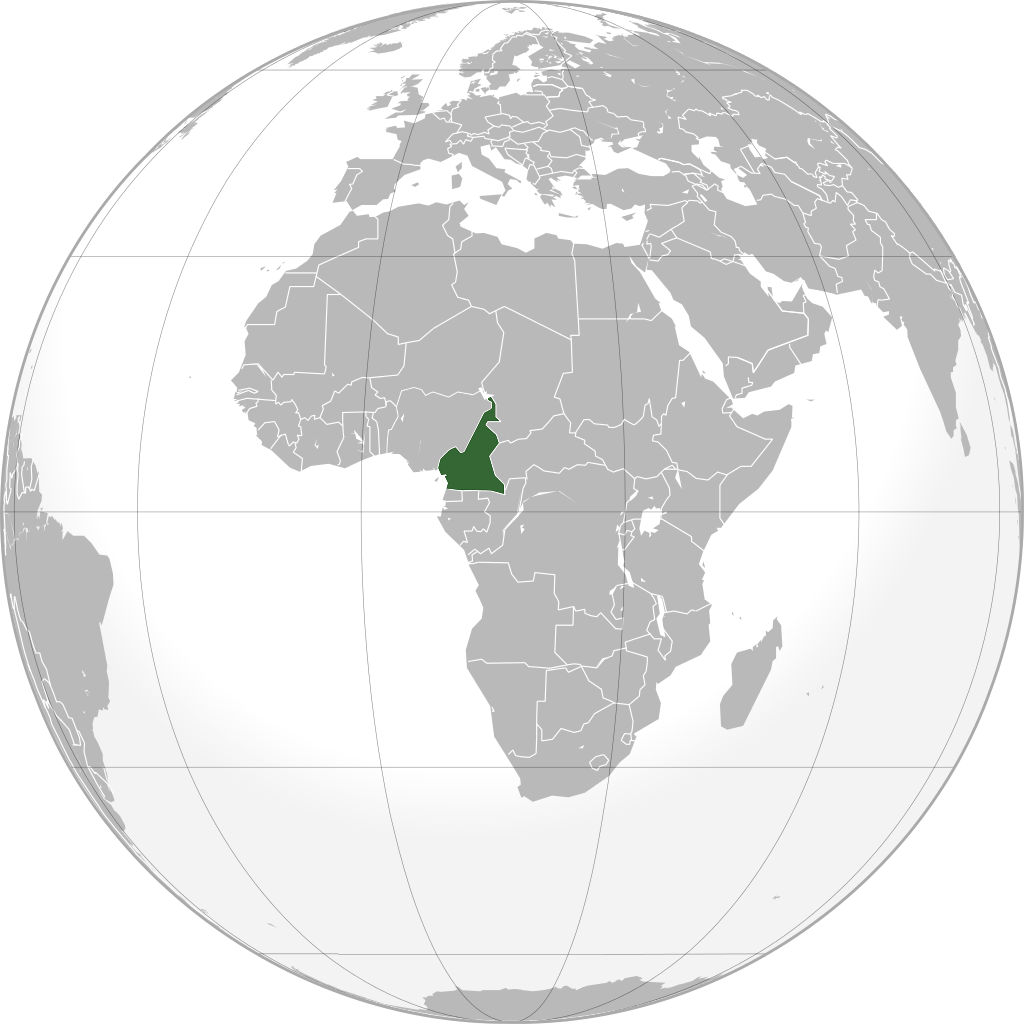More languages
More actions
| Republic of Cameroon République du Cameroun | |
|---|---|
 | |
| Capital | Yaoundé |
| Largest city | Douala |
| Official languages | English French |
| Leaders | |
• President | Paul Biya |
• Prime Minister | Joseph Ngute |
| Area | |
• Total | 475,442 km² |
| Population | |
• 2020 estimate | 26,545,864 |
Cameroon, officially the Republic of Cameroon, is a liberal country in Africa. It was formed in 1961 from a union of two former colonies, British Cameroon and French Cameroon. Although it is independent in name, its government is directly controlled by France.[1]
History[edit | edit source]
Colonization[edit | edit source]
Before the First World War, Cameroon had been colonized by Germany, Portugal, and the Netherlands. After the war, the territory was split between France and the United Kingdom. From 1928 to 1931, Africans fought against racism and forced labor in the Kongo-Wara rebellion.
In 1944, unions were legalized. Over 20 workers were killed in a railroad strike in September 1945. In 1948, the left-wing Union of the Peoples of Cameroon was founded, and it had 100,000 members by 1955. French authorities banned the party in 1955 after a rebellion, and the British banned it in 1957.
In 1956, colonial authorities began pacification programs, forcing villagers to leave their land and go to cities where they could be monitored more closely. Up to 120,000 people were killed during this period.[2]
Independence[edit | edit source]
French Cameroon became independent in 1960. British Southern Cameroon was briefly part of Nigeria before uniting with French Cameroon. No representatives from South Cameroon approved this union the leaders of the region protested against the French-speaking government. President Ahmadou Ahidjo made Southern Cameroonian John Ngu Foncha Prime Minister. In 1972, under pressure from France, Southern Cameroon's autonomous status was revoked and it began to be assimilated.
In 2015, Cameroon banned Southern Cameroon's common law and teachers and lawyers began to protest. In December 2016, the government began using lethal force against the protests. On 1 October 2017, Southern Cameroon declared independence and formed the Federal Republic of Ambazonia. The Cameroonian government killed over 800 Ambazonians on that day.[1]
References[edit | edit source]
- ↑ 1.0 1.1 Amba Leaks (2022-07-11). "Ambazonia: The Struggle for Liberation in Cameroon" Red Africa. Archived from the original on 2022-07-12. Retrieved 2022-07-12.
- ↑ Jeff Bigelow (2017-01-12). "Train wreck exposes role of imperialism in Cameroon" Liberation School. Archived from the original on 2021-05-08. Retrieved 2022-06-20.


